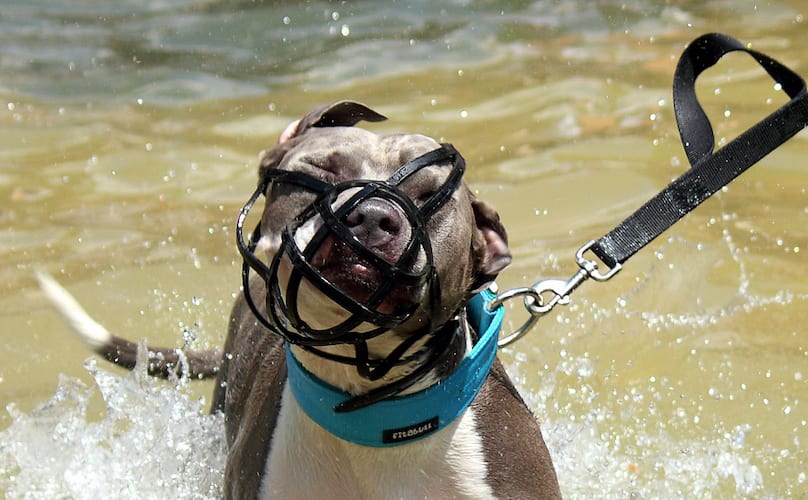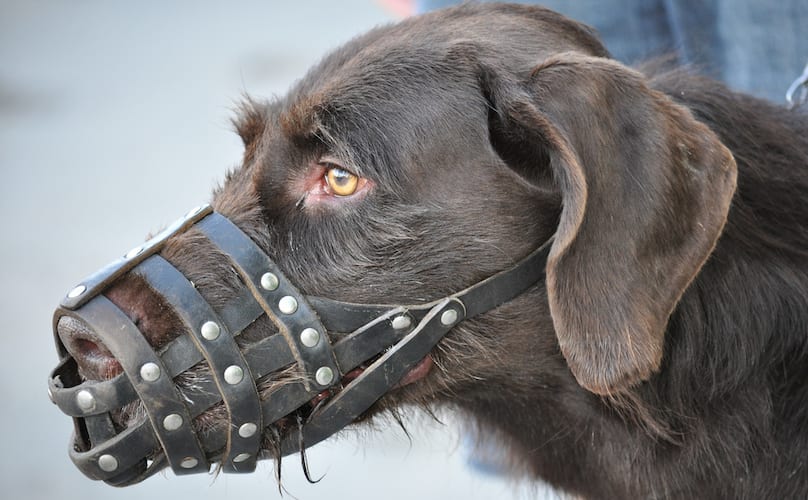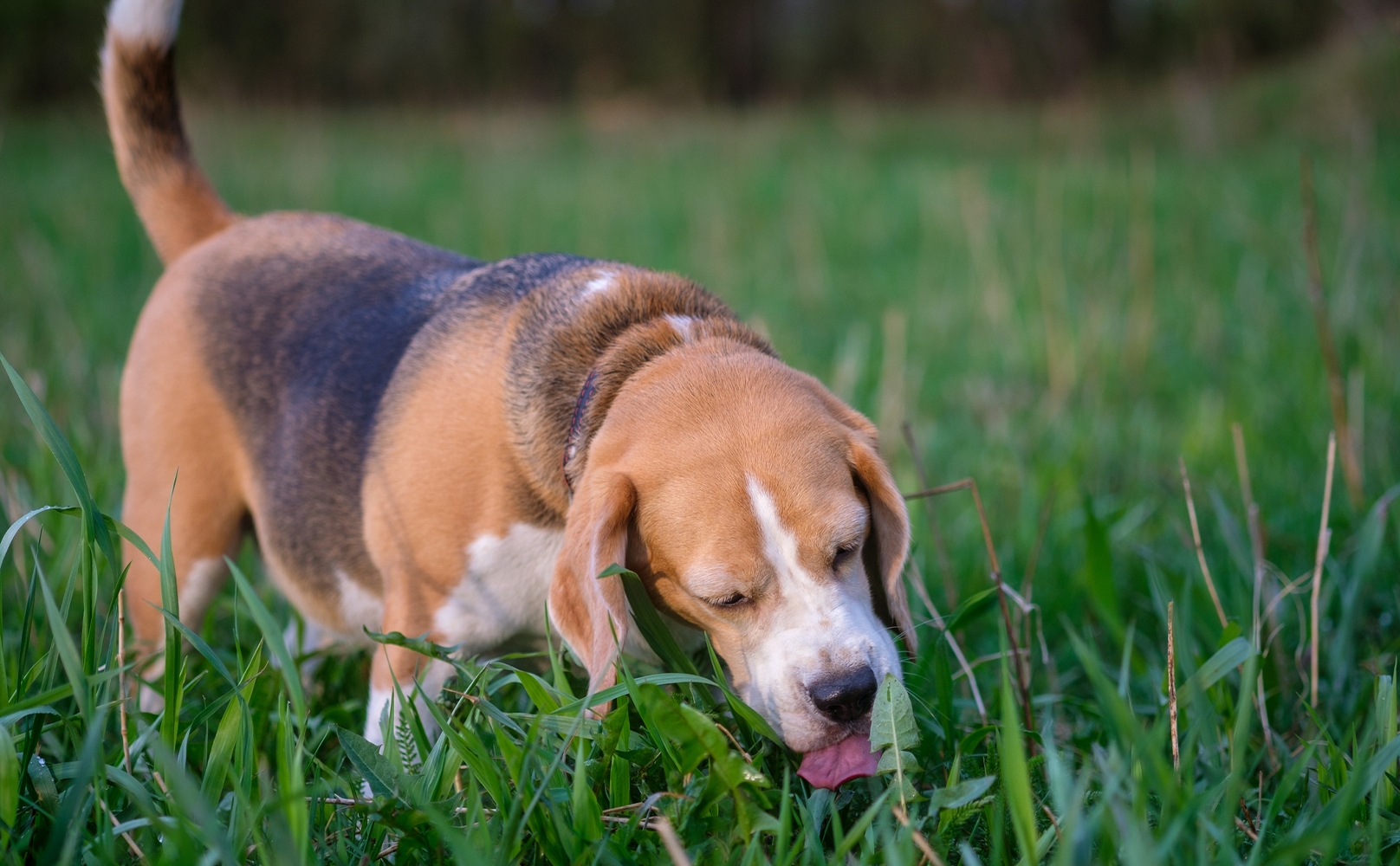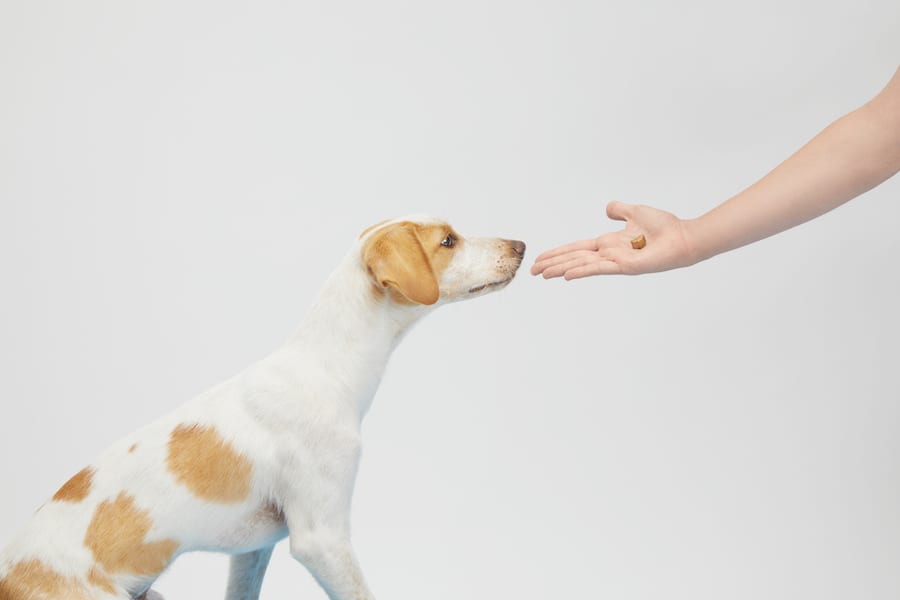***Looking for a gift to help your pup get through muzzle training? Try BarkBox on for size! Every month BarkBox delivers 2 original toys, designed in-house, 2 full bags of all-natural treats, and a chew. Sign up here and receive a free extra toy every month. <– This deal is worth up to $120 in value if you sign up for a 12-month subscription! 🙂
Back in the day, muzzle training was synonymous with reactive dogs. Most dog owners thought the only reason you would ever put a muzzle on your dog is if they were at risk of biting or harming themselves, other dogs, or other people.
And it makes sense! Muzzles can look kind of scary. And there’s also the worry of how your dog might feel in a muzzle. Is it uncomfortable? Does it hurt? How can they pant or drink water when they’ve got a muzzle strapped to their face?
But the truth is, while muzzles may look a little unsettling, when used correctly, they’re actually harmless—and muzzle training your dog, even if they’re not reactive, is a must if you want to keep you and your pup safe.
So, what’s the deal with muzzles? What are they best used for? And how can you safely and comfortably incorporate them into your dog’s training?
Why You Should Consider Muzzle Training Your Dog


First things first—why would you muzzle train your dog if they’re not reactive? And the answer is this: because there’s a good chance that at some point your dog will need to wear a muzzle—and if and when that situation arises, you don’t want it to be your dog’s first time wearing one.
There are a number of situations that might require you to muzzle your dog. Those situations include:
- Your dog has a medical emergency. If your dog is overwhelmed with pain or fear (for example, after suffering a traumatic injury), they might bite as a response. Muzzling your dog during a medical emergency will protect you, your pup, and any emergency personnel (like vet techs) your dog may encounter while they’re getting treatment.
- Your dog is getting groomed. Some dogs just hate getting groomed—and might snap at the groomer as a result. Muzzling a grooming-averse dog during the grooming process will make sure that your groomer (and your pup!) get through the grooming process injury free.
- Your dog feels threatened. If your dog feels threatened, they might bite as a way to protect themselves. Putting a muzzle on your dog in situations where they might feel threatened (for example, when meeting a new veterinarian) can help lower the risk of anyone getting bitten.
- Your dog is required to wear a muzzle. Some states, cities, counties, et cetera unfortunately have something called breed specific legislation that requires certain breeds to wear muzzles when they’re out in public.
As you can see, some of these situations are completely out of your control. There’s no way to predict an injury or an issue with a groomer. And that’s why muzzle training—even if your dog isn’t reactive—is so important.
Muzzle training gets your dog comfortable wearing a muzzle. That way, if a situation ever arises where you need to use a muzzle, your pup already know what’s up—and you can easily get the muzzle onto your dog without causing them any distress (or risking you or someone else getting bitten in the process).
How To Muzzle Train Your Dog


Ok, so now that we’ve covered why muzzle training is so important, let’s talk about how to muzzle train your pup.
The goal of muzzle training is to get your dog comfortable with the muzzle—and comfortable wearing the muzzle for longer periods of time. The key? Start slow and work your way up.
Start by letting your dog sniff the muzzle. Don’t attempt to slip it over their nose; just introduce your dog to the muzzle and let them sniff. Once they’re done sniffing, praise them and give them delicious dog treats. Repeat the process a few times.
Then, touch your dog’s nose with the muzzle. Immediately remove the muzzle and give your dog a treat and praise. Repeat this process a few times.
After you’ve touched your dog’s nose a few times, it’s time to actually get their nose into the muzzle. Hold the muzzle in one hand and the treat in the other. That way, your dog has to put their nose into the muzzle in order to get the treat. Again, repeat this process a few times.
Once your dog is comfortable putting their nose into the muzzle to get a treat, it’s time to slowly start working towards fastening and leaving the muzzle on for an extended period of time. First, slip the muzzle onto their nose, give them a treat, and immediately remove it. Then, slip the muzzle onto their nose, fasten it, give them a treat, and remove. Once they’re comfortable with that, slip on the muzzle, fasten, count to five, give them a treat and remove. Keep repeating the process until your dog is comfortable wearing the muzzle for longer and longer periods of time.
It’s all about baby (or puppy!) steps. The more you practice (and the more treats you give your pup), the more comfortable they’ll get with the muzzle. Then, it will be easier to put a muzzle on your pup if you’re ever faced with a situation where you need to.
How NOT To Muzzle Train Your Dog


Muzzle training is a must to keep your dog safe. But, like anything else, there are right ways and wrong ways to use a muzzle.
You should NOT muzzle your dog:
- As punishment. If your dog has a negative association with muzzles—which they will if you use them as a punishment—it will increase their fear around the muzzle. This will make it much harder (and more dangerous) to use one if the situation calls for it.
- To stop them from barking. Technically, putting a muzzle on your dog will keep them from barking because it restricts their ability to open and close their mouth. But muzzling doesn’t address the reason why your dog is barking—so the second the muzzle comes off, your dog will go right back to their barking behavior.
- To stop them from chewing. The same thing goes for chewing. Muzzling is a temporary solution to a long-term issue—so if your dog has an issue with chewing, muzzling isn’t going to solve the problem.
- With a muzzle that’s too tight. It’s imperative to choose muzzle that properly fits your dog. If a muzzle is too tight, it can restrict your dog’s ability to breathe and pant—and can also cause skin irritation.
Bottom line: it doesn’t matter if your dog is or isn’t reactive—muzzle training is a really good idea.
Featured image via Maja Dumat/Flickr
Looking For More Articles Like This?
Puppy 101: How Do I Stop My Puppy From Biting?
My Dog Is Biting: How Do I Get Them To Stop?
6 Warning Signs A Dog’s About To Bite
How Do I Find A Trainer For My Dog?






